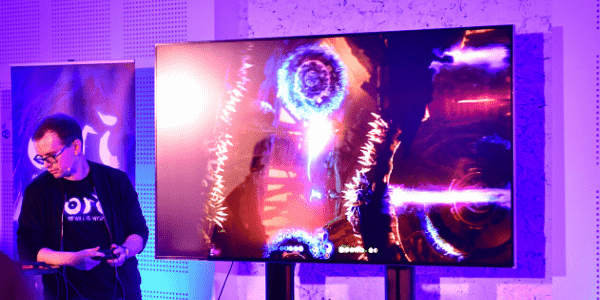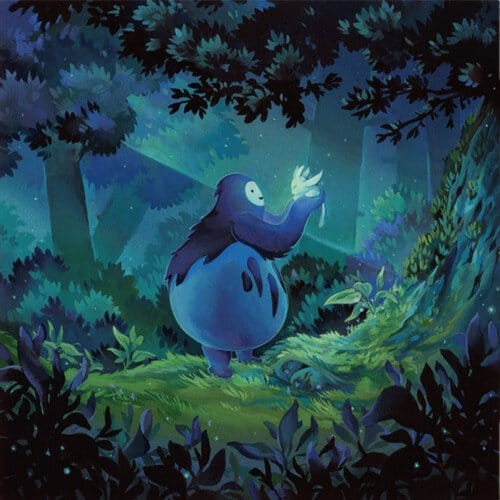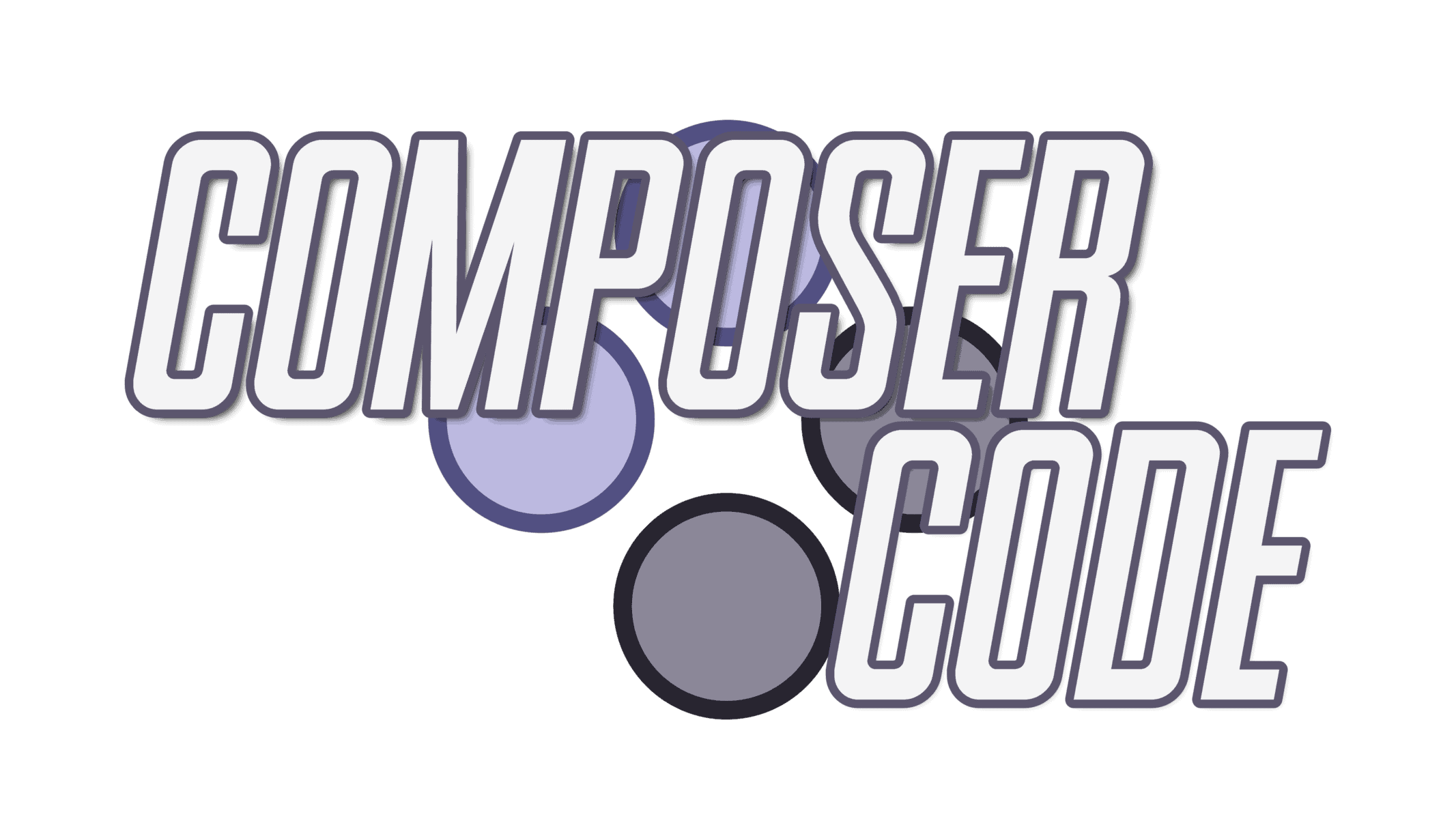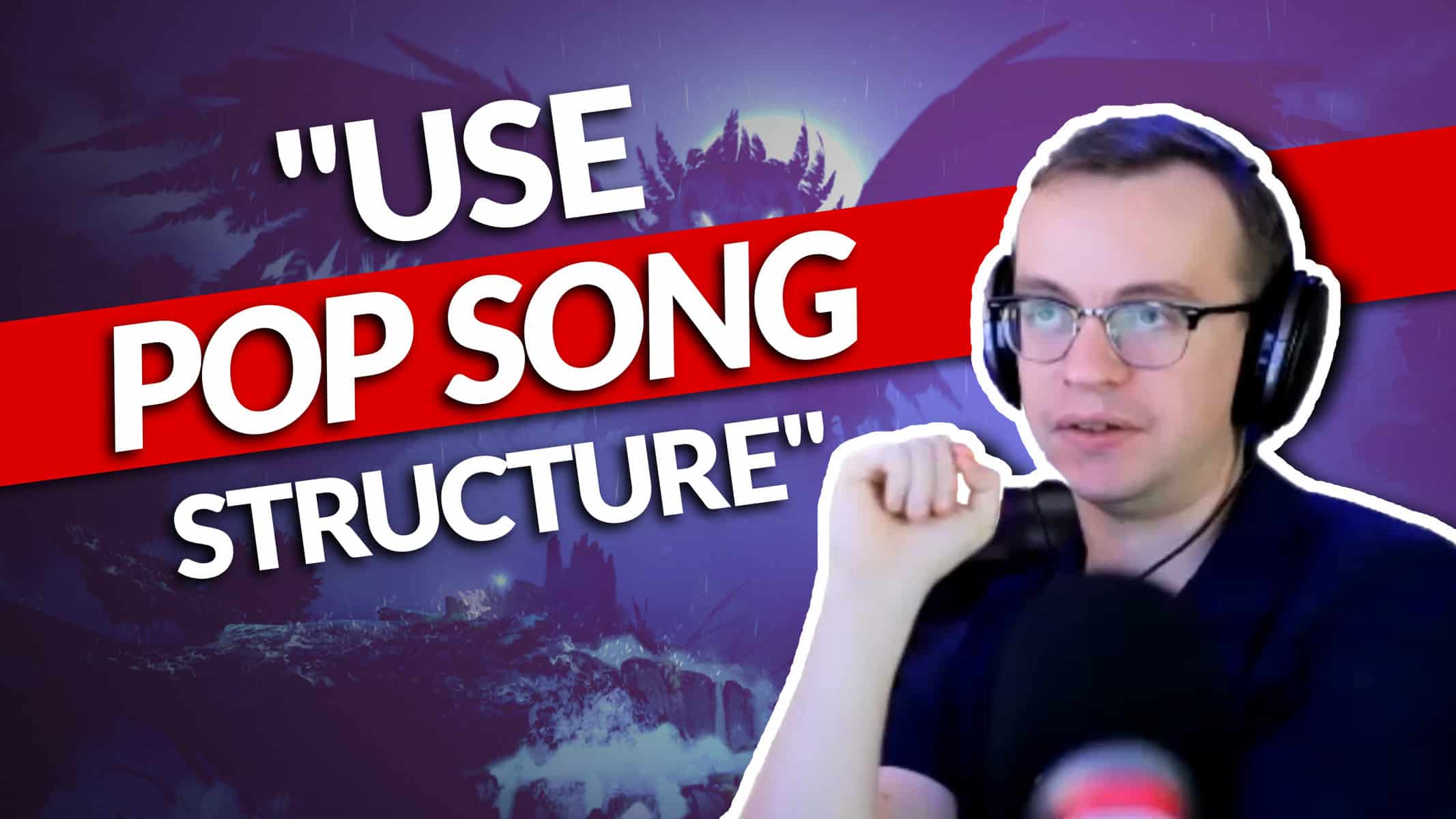Podcast: Play in new window | Download
Subscribe: Google Podcasts | RSS
What the composer of Ori and the Blind Forest and Halo Infinite taught me about making music for games

I recently had the pleasure of interviewing Gareth Coker on Composer Code. He’s been on my list for a really long time, and our schedules finally lined up.
It was such an insightful interview, specifically in the realms of orchestral arrangement, which continues to be a challenge for me.
I highly recommend checking out the full conversation wherever you listen to podcasts. But in this post, I want to share 5 things that jumped out at me during our interview.
1. Don’t rely on the game engine alone to create an experience
Since the advent of implementation tools, audio programmers and game developers have created some really amazing and complex dynamic music in games.
A subtle drone can seamlessly ramp up to raucous battle music and back down again all based on the player’s actions. Developers can layer tracks vertically (stacking based on game events) or horizontally (cross-fading between tracks).
These tools, when used tastefully, produce incredible results. However, Gareth cautioned against relying too heavily on the game engine to create an immersive experience.
He explained how in the Ori games, they tried using dynamic music for enemy fights, but it came off “cheesy” and “video-gamey” due to how frequently the player encounters enemies.
The result was this constant oscillation between battle music and exploration music. Gareth recommended another strategy: playing through the game and looking for “triggers.”
He defines triggers as key moments, story beats, or locations that best support a change in the music.
Every game has triggers, it just takes a bit more effort and intentionality to locate and utilize them for musical immersion. It’s a bit like combining elements of film scoring with dynamic music — taking the best of both worlds and creating the most immersive experience.
Of course, none of this can happen if the composer isn’t actually playing the game (leading nicely into my next point).
2. Play the game as early and often as possible
A lot of the time, composers can feel like “icing on the cake” rather than a chef in the kitchen. Our music is shoehorned in after the game is already done. In the worst-case scenario, we’re kind of an afterthought.
It’s not uncommon for game composers to work entirely off of a few screenshots or some gameplay footage and never actually play a game build.
Gareth stressed that sometimes, that’s all you need. But for him, nothing compares to actually getting your hands on the game as early and often as possible. He stressed this multiple times in our interview, and I’m convinced it’s a huge reason the music of the Ori games is so beloved and well-suited to the games.
Music contextualizes games, but games also contextualize how we as composers produce music.

Gareth gave several examples of how the “feel” of the game informed his music theory, arrangement, and melodic choices. It was stunning to me how it felt like he was actually on the development team (what a novel idea!).
Whether you’re writing game music for yourself or a client, insist on getting a build of the game wherever you can. Your client will not only be impressed at your commitment to the project, but you’ll likely write better music as a result.
3. Don’t be afraid to repeat, resurrect, and vary past themes
One of the biggest temptations of game composers (I think mostly due to our own pride), is that every track (or project) has to have new and fresh material.
Depending on our client’s wishes, that may be true. But there’s something to be said for resurrecting past material at key points.
Gareth talked about how in Ori 2 (Ori and the Will of the Wisps), he brought back Ori’s theme in a familiar way but in a new setting during a key gameplay moment.
The result is this nostalgic “Hey, I remember that!” feeling in the player (even if they don’t express that explicitly, they’re certainly feeling it if they played Ori 1).
After all, Gareth recalled how one of the first things you learn in Composition 101 is theme and variation. If it was good enough for all the classical composers of old (and Koji Kondo in the ‘90s Mario and Zelda games), it’s good enough for us.
4. Use an expanded pop song structure for orchestral arrangement
Okay, so this tip absolutely blew my mind and I seriously can’t wait to try it.
I expressed to Gareth how orchestral music is still the biggest challenge for me as a composer (I’ve mentioned this so many times on the podcast. Dear podcast listeners are probably so sick of hearing me air my insecurities).
I told him how whenever I write orchestral music, it feels very “gamey” and “loopy.” Meaning, it’s clear that it’s written for a video game. It doesn’t really take the listener on a journey.
Without even a pause, Gareth goes, “I’ll tell you the secret. Pop song structure.”
As that Django Unchained quote goes, “You had my curiosity. Now you have my attention.”
Chris Young (the same professor who taught Jason Graves), taught Gareth in the USC composition program. When it came to orchestral arrangement — actually telling a story with orchestral music — Chris espoused the pop song structure.
Let’s back up. For those of you who don’t know the pop song structure, it’s:
VERSE – CHORUS – VERSE – CHORUS – BRIDGE – CHORUS
Sometimes there’s a VERSE 2 snuck in there before the first chorus, but for the most part, this is the standard formula for all pop music.
Just flip on the radio or listen to the chart-toppers on Spotify if you don’t believe me.
Most pop music is under 4 or 5 minutes, so these sections have to be pretty short. Maybe an 8 bar verse, an 8 bar chorus, and an 8 bar bridge.
However, for orchestral music, Gareth recommended elongating the structure. For example, he might write a 16 bar “verse” section, a 32 bar “chorus” section, etc. The result is a long, evolving, dramatic orchestral piece that provides newness and familiarity in the repetition.
This is so genius and so practical, I cannot wait to try it out for myself.

5. Avoid the charge “by the minute” model
It’s always been challenging to monetize art. How do you ascribe value to music for clients?
We’ve tried hard to come up with models, but they all have their limitations. Charging by the hour (your time) punishes you for being efficient and rewards you for taking a long time. That’s not cool for you or the client.
Charging by the minute of produced music tends to be the most popular invoicing method, but Gareth pointed out some logical flaws with working this way.
First off, game development cycles are constantly in flux. You might charge for x amount of minutes, but a growing Kickstarter campaign might beef up the number of levels that need music, or offer a budget for a live orchestra.
Once you hit the x minute mark, are you really going to say, “Oops, too bad. You have two more levels but I already reached my minute mark, sorry guys! You can pay me again for more.”
Or if half your music gets cut from the game for some reason, are the devs going to say, “Well, we didn’t really use half your music so we’d like half our money back.”
Think of it this way: if you have a beautiful, 20-minute orchestral piece on sale for $1, and an incredible 3-minute funk tune on sale for $1, do you really care about the minute count?
No, that’s ridiculous. You’re paying for the feeling the music gives you. In the same way, the developers are paying for the way you’re enhancing and contextualizing their game.
But, that leads us back to the “how to charge” dilemma. Gareth said that it’s better to evaluate the entire project, and simply ask yourself, “how much am I willing to take to work on this?”
“If the minute count went up by 20%, would I still be okay getting this rate? What about less, would I charge less to the client?”
Obviously, the project has to be something you’re excited about, and the more excited you are about it and the more you want it as a credit, the less you’ll be willing to take.
Sometimes, charging by the minute is inevitable, especially for games in early development or a vague scope.
In that case, it’s best to go with a hybrid approach where you charge a lump sum for the actual project as it’s currently scoped, and then if a significant amount of music needs to be written down the line, you invoice again based on the expanded musical requirements.
Listen to the full interview!
All in all, it was an incredible conversation. Gareth is a down-to-earth guy with no ego and plenty of practical wisdom.
I highly recommend listening to the entire interview, which you can find on this page or wherever you listen to podcasts.

